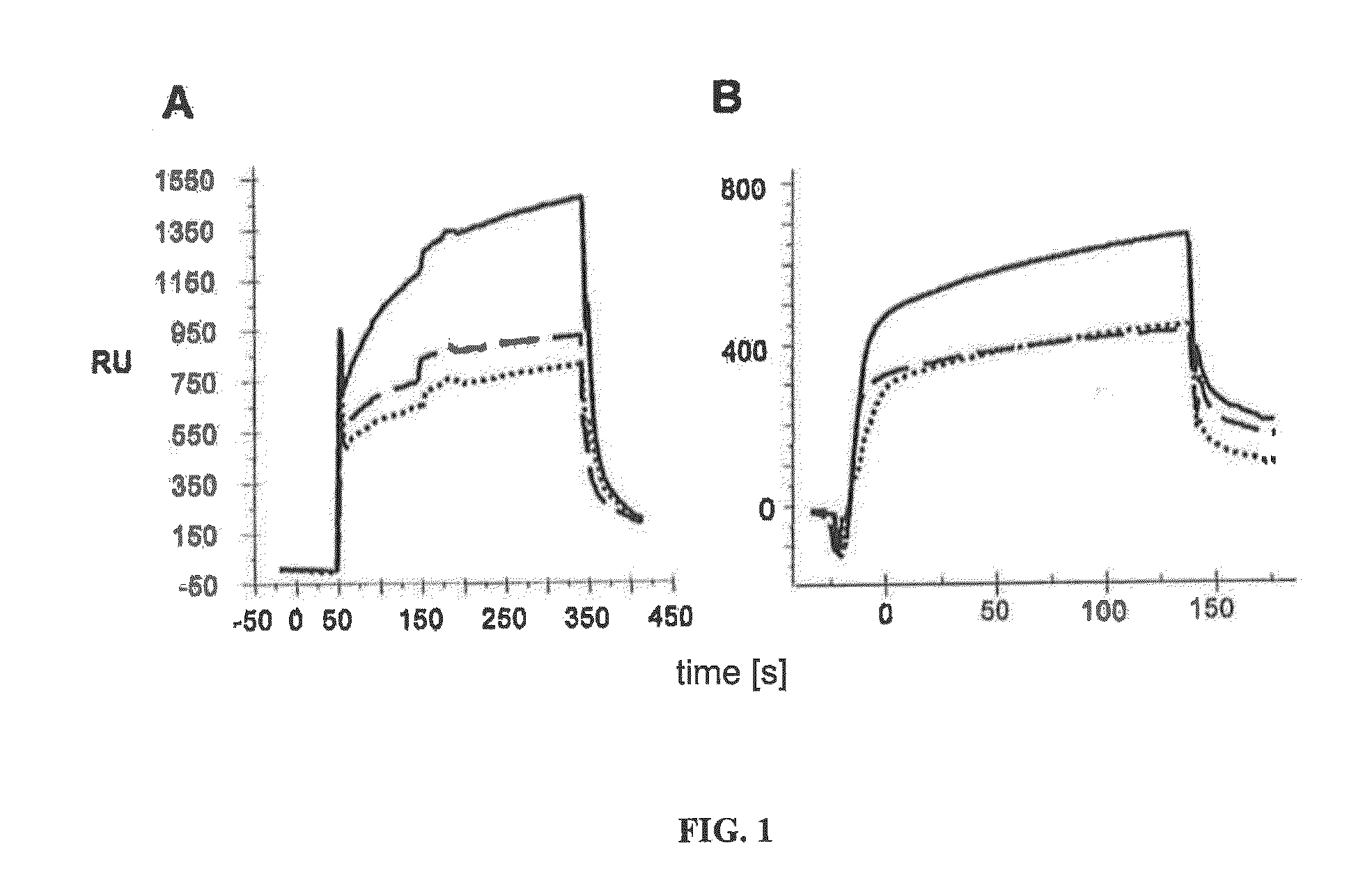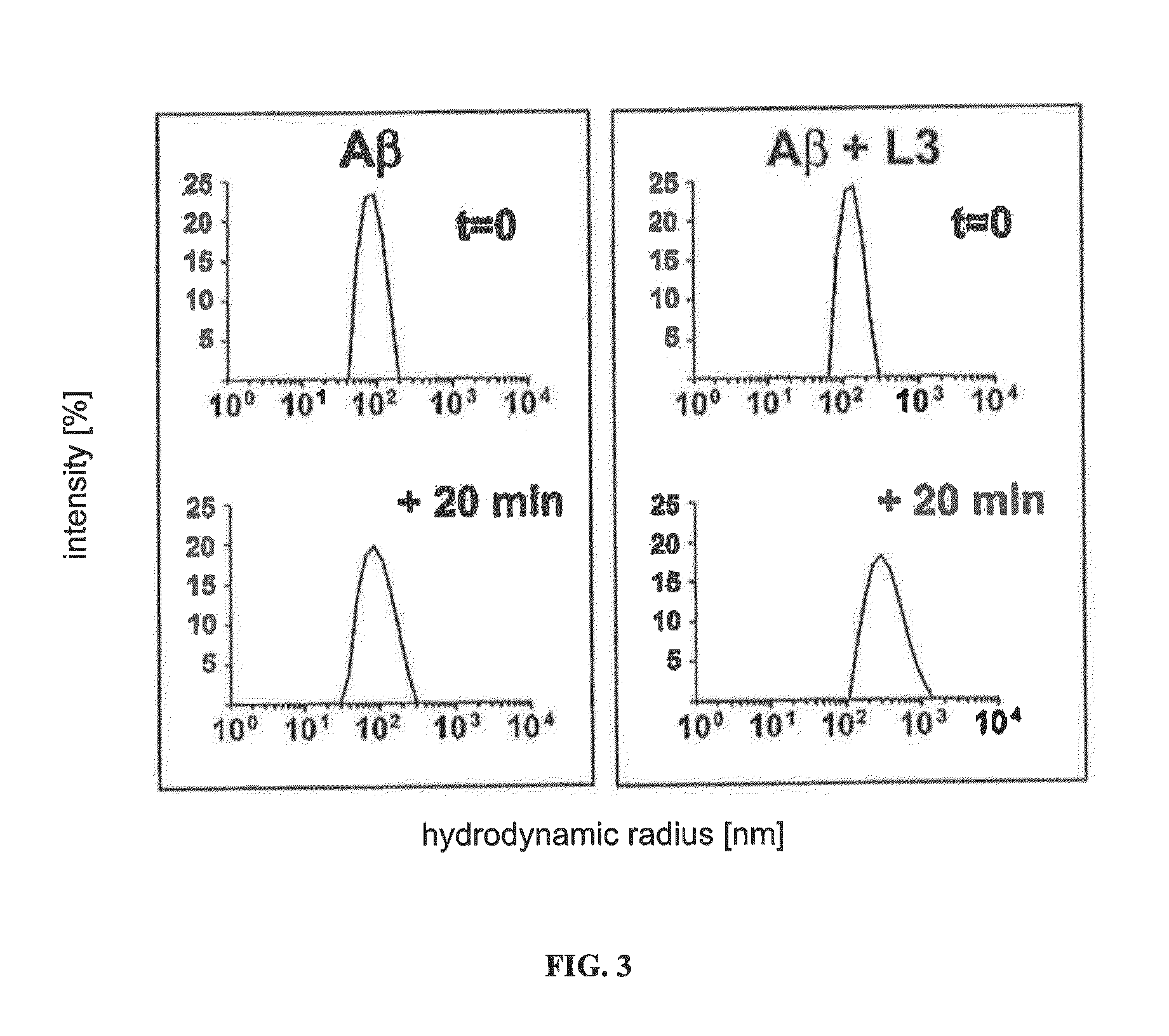Agents for treating alzheimer's disease
a technology for alzheimer's and agents, applied in the field of agents for treating alzheimer's disease, can solve the problems of preventing or reversing the disease process, unable to aggregate (further) and toxic a oligomers, and achieve the effect of preventing or suppressing undesirable immune responses to the secretion section and better binding properties
- Summary
- Abstract
- Description
- Claims
- Application Information
AI Technical Summary
Benefits of technology
Problems solved by technology
Method used
Image
Examples
Embodiment Construction
[0041]FIG. 1 shows the comparison of the preferential binding of L3 and D3 for Aβ1-42 oligomers. L3 is shown in section A and D3 is shown in section B of the figure. L3 exhibits stronger binding than D3. Aβ1-42 monomers (dashed lines), oligomers (solid lines) and fibrils (dotted line) were immobilized on a CM5 biosensor chip. Interaction analyses were carried out by means of surface pl s on resonance. RU: resonance units. In each case, 25 μl peptide solution (100 μg / ml) was injected. Both peptides exhibit very clear binding to Aβ1-42 oligomers, while L3 generally exhibits a higher maximum resonance than D3. The same results are also obtained for Aβ1-40 oligomers.
[0042]FIG. 2 shows the results of comparison of the density gradient centrifugation of Aβ1-42 without peptide, with L3 and with D3. L3 precipitates Aβ oligomers from complex mixtures of different Aβ forms. The size distributions of Aβ in solution and in Aβ-peptide mixtures were examined by way of sedimentation analysis on an...
PUM
| Property | Measurement | Unit |
|---|---|---|
| pH | aaaaa | aaaaa |
| temperature | aaaaa | aaaaa |
| pH | aaaaa | aaaaa |
Abstract
Description
Claims
Application Information
 Login to View More
Login to View More - R&D
- Intellectual Property
- Life Sciences
- Materials
- Tech Scout
- Unparalleled Data Quality
- Higher Quality Content
- 60% Fewer Hallucinations
Browse by: Latest US Patents, China's latest patents, Technical Efficacy Thesaurus, Application Domain, Technology Topic, Popular Technical Reports.
© 2025 PatSnap. All rights reserved.Legal|Privacy policy|Modern Slavery Act Transparency Statement|Sitemap|About US| Contact US: help@patsnap.com



